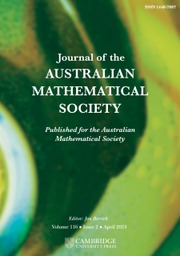No CrossRef data available.
Article contents
FINITE LINEAR COMBINATIONS OF MONOMIAL TOEPLITZ PRODUCTS ON THE BERGMAN SPACE
Published online by Cambridge University Press: 10 March 2025
Abstract
In sharp contrast to the Hardy space case, the algebraic properties of Toeplitz operators on the Bergman space are quite different and abnormally complicated. In this paper, we study the finite-rank problem for a class of operators consisting of all finite linear combinations of Toeplitz products with monomial symbols on the Bergman space of the unit disk. It turns out that such a problem is equivalent to the problem of when the corresponding finite linear combination of rational functions is zero. As an application, we consider the finite-rank problem for the commutator and semi-commutator of Toeplitz operators whose symbols are finite linear combinations of monomials. In particular, we construct many motivating examples in the theory of algebraic properties of Toeplitz operators.
MSC classification
Information
- Type
- Research Article
- Information
- Copyright
- © The Author(s), 2025. Published by Cambridge University Press on behalf of Australian Mathematical Publishing Association Inc.
Footnotes
Communicated by Ji Li
The second author was supported in part by the National Natural Science Foundation of China (Grant Nos. 12271396, 12171353).


